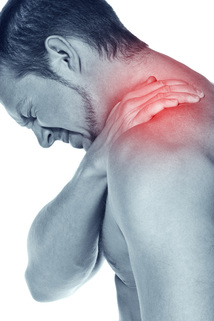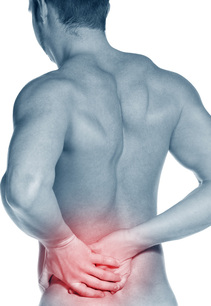__ Injured in a Car Accident?In Pain? Let us help.
__ Our individualized treatments are fully covered by your Car Insurance
• Non-Invasive, Pain-Free & Effective Treatments
• Health Canada & FDA Approved Technology based Treatments
• High Treatment Success Rates for Accident Patients
• Insurance Premiums will NOT increase
• NO family doctor’s referral needed
• We will work with your lawyer or refer you to our team of expert lawyers
• Non-Invasive, Pain-Free & Effective Treatments
• Health Canada & FDA Approved Technology based Treatments
• High Treatment Success Rates for Accident Patients
• Insurance Premiums will NOT increase
• NO family doctor’s referral needed
• We will work with your lawyer or refer you to our team of expert lawyers
_“CDNC’s Neuro-Oxygen Spinal Decompression system has shown great success
in improving neck and back conditions caused by injuries of the spine
during a motor-vehicle accident.”
Neck Injuries

_Neck injuries vary from whiplash, one of the most common and annoying injuries caused by car accidents, to disc injuries. Whiplash is an injury frequently associated with rear-end impacts. Whiplash injures the soft tissues made up of nerves, ligaments and muscles. It causes neck pain and limitation of neck and head movement affecting rotation and peripheral vision. It may be temporary or permanent and can affect all aspects of life. If whiplash lasts for more than a few days after a car accident physicians will prescribe medications and often refer patients to physical therapists or
chiropractors for rehabilitative therapy. CDNC practitioners employ Spinal Decompression technology to heal whiplash injuries.
Temporalmandibular joint (TMJ) injury is an injury to the joint and ligaments that allow the jaw to move. Similar to whiplash, the TMJ joint is injured in the acceleration and deceleration of a car accident. This may occur with direct or indirect injury to the jaw and affects chewing, eating and speech. CDNC practitioners use cervical spinal
decompression to negate the effects of TMJ disorder.
Intervertebral discs make up the spine. The discs lie between each bone (vertebrae) in the spine and form joints giving the spine flexibility. Discs are made up of an outer skin called an annulus that surrounds the inner nucleus, a jelly like substance. If the annulus is torn, a disc may herniate and need immediate attention. Discs in the neck and spine may bulge, slip or rupture, hence the phrases “bulging disc”, “slipped disc”, and “ruptured disc”. CT scans and MRI scans are often used to diagnosis disc injuries. It frequently occurs where a disc injury or herniated disc is not diagnosed until months after a car accident at which point the accident victim’s pain has become chronic. Canadian Decompression and Pain Centers specialize in the treatment of chronic back and neck pain.
chiropractors for rehabilitative therapy. CDNC practitioners employ Spinal Decompression technology to heal whiplash injuries.
Temporalmandibular joint (TMJ) injury is an injury to the joint and ligaments that allow the jaw to move. Similar to whiplash, the TMJ joint is injured in the acceleration and deceleration of a car accident. This may occur with direct or indirect injury to the jaw and affects chewing, eating and speech. CDNC practitioners use cervical spinal
decompression to negate the effects of TMJ disorder.
Intervertebral discs make up the spine. The discs lie between each bone (vertebrae) in the spine and form joints giving the spine flexibility. Discs are made up of an outer skin called an annulus that surrounds the inner nucleus, a jelly like substance. If the annulus is torn, a disc may herniate and need immediate attention. Discs in the neck and spine may bulge, slip or rupture, hence the phrases “bulging disc”, “slipped disc”, and “ruptured disc”. CT scans and MRI scans are often used to diagnosis disc injuries. It frequently occurs where a disc injury or herniated disc is not diagnosed until months after a car accident at which point the accident victim’s pain has become chronic. Canadian Decompression and Pain Centers specialize in the treatment of chronic back and neck pain.
Back Injuries

_Intervertebral discs in the neck, cervical discs, are not the only discs injured in car accidents. Thoracic (mid-back) discs and lumbar (lower back) discs may also be injured. Compression fractures may be caused in such accidents causing permanent disability in which case a victim becomes ineligible for spinal decompression therapy. However herniation
or bulges that cause spinal cord compression may be reversed through spinal decompression. Symptoms of spinal injuries include arm and/or leg weakness, paralysis, difficulty breathing, numbness, tingling, and abnormal bowel or bladder control. Disc injuries causing those symptoms may require surgery to remove disc material or spinal fusion.
Spinal Decompression can be used to reverse spinal compression and thus alleviate pain.
In the same way whiplash injures soft tissues of the neck, the back nerves, ligaments and muscles may be traumatized by a car accident causing pain and inflammation. Prescriptive medications are often used initially but for continuing pain and inflammation, patients are traditionally sent to physical therapists or chiropractors for rehabilitative
therapy. Such therapy generally includes infrared heat, hot packs, paraffin bath, hydrotherapy, diathermy, cold packs, ultrasound, electrical stimulation, muscle strengthening, massage, or acupuncture. Spinal Decompression is new-age technology that may be able to provide long-lasting, if not permanent, pain-relief to those suffering from debilitating and chronic pain.
Whiplash is most commonly received while riding in a car that is struck from the front, back or side. It also occurs from sports injuries, slips or falls or unexpected, rapid motions of the neck. While the head is suddenly jerked either forward and back, back and forward or side to side, the muscles, the ligaments and other soft tissues supporting the spine and head can be overstretched or torn. The soft pulpy discs between spinal bones can bulge, tear or rupture. Vertebrae can be forced out of their normal position, reducing range of motion. The spinal cord and nerve roots in the neck can get stretched and irritated. The resulting instability of the spine and soft tissues can result in headaches, dizziness, blurred vision, pain in the shoulder, arms and hands, reduced ability to turn and bend, and even low back problems. As the body attempts to adapt, symptoms may not appear for weeks or even months.
or bulges that cause spinal cord compression may be reversed through spinal decompression. Symptoms of spinal injuries include arm and/or leg weakness, paralysis, difficulty breathing, numbness, tingling, and abnormal bowel or bladder control. Disc injuries causing those symptoms may require surgery to remove disc material or spinal fusion.
Spinal Decompression can be used to reverse spinal compression and thus alleviate pain.
In the same way whiplash injures soft tissues of the neck, the back nerves, ligaments and muscles may be traumatized by a car accident causing pain and inflammation. Prescriptive medications are often used initially but for continuing pain and inflammation, patients are traditionally sent to physical therapists or chiropractors for rehabilitative
therapy. Such therapy generally includes infrared heat, hot packs, paraffin bath, hydrotherapy, diathermy, cold packs, ultrasound, electrical stimulation, muscle strengthening, massage, or acupuncture. Spinal Decompression is new-age technology that may be able to provide long-lasting, if not permanent, pain-relief to those suffering from debilitating and chronic pain.
Whiplash is most commonly received while riding in a car that is struck from the front, back or side. It also occurs from sports injuries, slips or falls or unexpected, rapid motions of the neck. While the head is suddenly jerked either forward and back, back and forward or side to side, the muscles, the ligaments and other soft tissues supporting the spine and head can be overstretched or torn. The soft pulpy discs between spinal bones can bulge, tear or rupture. Vertebrae can be forced out of their normal position, reducing range of motion. The spinal cord and nerve roots in the neck can get stretched and irritated. The resulting instability of the spine and soft tissues can result in headaches, dizziness, blurred vision, pain in the shoulder, arms and hands, reduced ability to turn and bend, and even low back problems. As the body attempts to adapt, symptoms may not appear for weeks or even months.
_“CDNC’s Neuro-Oxygen Spinal Decompression treatment system may help alleviate back pain caused by all the conditions mentioned above, and in some cases may even be able to reverse the physiological changes"
